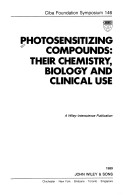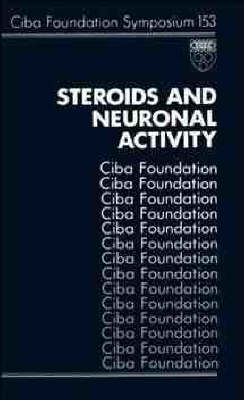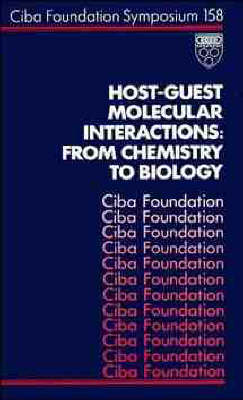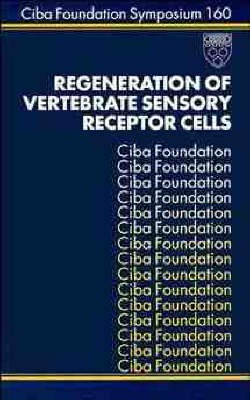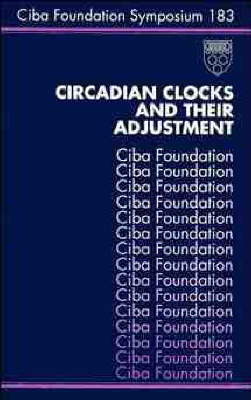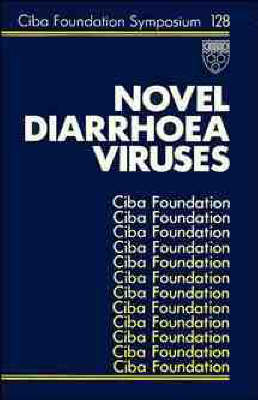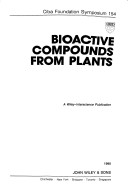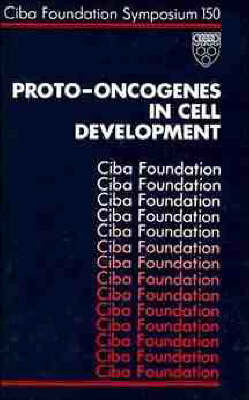Ciba Foundation Symposium
12 primary works • 35 total works
Book 118
Ciba Foundation: Symp 118 Biochemistry of Macroph Ages
by Ciba Foundation Symposium
Book 136
Book 143
High concentrations are found in malignant tissues, the result (in culture at least) of stimulation of hyaluronan synthesis in fibroblasts by tumour cells. Another stimulatory factor, produced by activated blood mononuclear cells, links hyaluronan to inflammatory diseases such as scleroderma and rheumatoid arthritis. High levels are produced in cirrhotic liver disease, malignant mesothelioma and sarcoidosis. The clinical use of hyaluronan as a connective tissue marker is leading to a better understanding of such diseases. The symposium concludes with a discussion of the surgical use of purified hyaluronan, including the development of new molecular forms for use in the control of adhesions, scar formation and tissue regeneration. Related Ciba Foundation Symposia: No 124 Functions of the proteoglycans Chairman: V. C. Hascall 1986 ISBN 0 471 91090 2 No 136 Cell and molecular biology of vertebrate hard tissues Chairman: G. A. Rodan 1988 ISBN 0 471 91885 7 No 145 Carbohydrate recognition in cellular function Chairman: E. Ruoslahti 1989 ISBN 0 471 92307 9
Book 145
Carbohydrate Recognition in Cellular Function
by Ciba Foundation Symposium and Foundation Ciba
Isolated gangliosides and galactosides also mediate recognition processes directly, in nerve cells at least; a specific ganglioside activates a membrane-bound protein kinase in neuroblastoma cells, triggering phosphorylation of several cell surface proteins; and the different subsets of rat dorsal root ganglion neurons express distinct sets of oligosaccharides which are recognized by binding proteins on dorsal root ganglion and spinal neurons. Modification of the carbohydrate moiety of glycoproteins is a frequent occurrence in certain diseases, including those of the immune system. Recent progress in understanding all these areas is described. The discussions after each presentation highlight work that remains to be done. Related Ciba Foundation Symposia: No 143 The biology of hyaluronan Chairman: T. C. Laurent 1989 ISBN 0 471 92305 2 No 136 Cell and molecular biology of vertebrate hard tissues Chairman: G. A. Rodan 1988 ISBN 0 471 91885 7 No 124 Functions of the proteoglycans Chairman: V. C. Hascall 1986 ISBN 0 471 91090 2
Book 146
Book 148
Molecular Control of Haemopoiesis
by Ciba Foundation Symposium and Foundation Ciba
This book includes reports on the progress of several clinical trials and discussion of future possibilities. Related Ciba Foundation Symposia: No 84 Microenvironments in haemopoiesis and lymphoid differentiation Chairman: M.F. Greaves 1981 ISBN 0 471 91053 8 No 116 Growth factors in biology and medicine Chairman: Sir Michael Stoker 1985 ISBN 0 471 91085 6 No 131 Tumour necrosis factor and related cytotoxins Chairman: L.J. Old 1987 ISBN 0 471 91097 X
Book 153
The use of glucocorticoid steroids in the attenuation of neuronal damage after stroke or other trauma is being investigated, as is the role of ovarian steroids as anaesthetics and as anticonvulsants. The volume concludes with a review of glucocorticoid effects on long-term potentiation in the CNS. Related Ciba Foundation Symposia: No 123 Antidepressants and receptor function Chairman: D.L. Murphy 1986 ISBN 0 471 91089 9 No 152 The biology of nicotine dependence Chairman: L.L. Iversen 1990 ISBN 0 471 92688 4
Book 158
Host-Guest Molecular Interactions from Chemistry to Biology
by Ciba Foundation Symposium
Topics covered include biomimetic chemistry, the design of synthetic host molecules which mimic biological processes such as ion transport across membranes and catalysis, and the concepts of preorganization and template-directed synthesis. Molecular recognition processes involved in binding of antibiotics to peptides and to DNA and in binding of sequence-specific gene inhibitors to DNA are discussed. The potential applications of oligonucleotides with modified phosphate diester linkages as probes of DNA - protein interactions and for anti-HIV treatment are described. Interactions between proteins and other molecules and the computational modelling of interactions are considered. Related Ciba Foundation Symposia: No 119 Synthetic peptides as antigens Chairman: G.L. Ada 1986 ISBN 0 471 99838 9 No 145 Carbohydrate recognition in cellular function Chairman: E. Ruoslahti 1989 ISBN 0 471 92307 9 No 159 Catalytic antibodies Chairman: W.P. Jencks 1991 ISBN 0 471 92962 X
Book 160
Regeneration of Vertebrate Sensory Receptor Cells
by Ciba Foundation Symposium
Experts in two other relevant fields - the cell cycle, and mitogenic growth factors - also contributed to the search for the precursors and/or stem cells in each sense organ and for the signals which regulate differentiation of those precursors, in normal development and potentially in regeneration. While regeneration of the mammalian inner ear or retina is still some way off, much is already being learned about the cellular processes underlying regeneration in other sensory systems and is being actively applied to the more intractable ones. The symposium should interest a broad range of cell biologists beyond those already involved in sensory receptor function and regeneration.Other Ciba Foundation Symposia: No. 138 Plasticity of the neuromuscular system Chairman: A.J. Buller 1988 ISBN 0 471 91902 0 No. 144 Cellular basis of morphogenesis Chairman: L. Wolpert 1989 ISBN 0 471 92306 0 No. 153 Steroids and neuronal activity Chairman: M.A. Simmonds 1990 ISBN 0 471 92689 2 No. 155 Myopia and the control of eye growth Chairman: J. Wallman 1990 ISBN 0 471 92692 2
Book 183
The organization and operation of circadian pacemakers in vertebrates is dealt with in the hamster and the rat; the results and implications of studies of the neuronal pathways involved in the circadian timing system, the intrinsic rhythms generated by the suprachiasmatic nuclei and cross-genotype transplantation of the suprachiasmatic nuclei in the tau period mutant hamster are considered. A discussion of current knowledge of the anatomical, genetic and neurochemical pathways involved in photic and non-photic entrainment in the hamster leads on to the changes that occur with ageing. Aspects of the book with direct relevance to humans include chapters on the importance of circadian time in clinical pharmacology and on the adjustment of the pacemaker by light and melatonin treatment in disorders such as shift-work dyssomnia and jet lag. Related Ciba Foundation Symposia: No. 168 Functional anatomy of the neuroendocrine hypothalamus Chairman: S. Lightman 1992 ISBN 0 471 93440 2 No. 170 Regulation of the eukaryotic cell cycle Chairman: T. Hunter 1992 ISBN 0 471 93446 1
Book 197
Variation in the Human Genome
by Ciba Foundation Symposium, Kenneth Weiss, Derk J Chadwick, and Foundation Ciba
Book 208
v. 162
Similarly, whether models for the inheritance of handedness share any features with those for the inheritance of anatomical asymmetries is an open question. Was there an ancestral left-right gene that gave rise to a family of homologues which specify morphological and functional handedness? This multidisciplinary book, the first on this topic for twenty years, discusses models for the inheritance of anatomical asymmetry and for the inheritance of human handedness. Other recent Ciba Foundation Symposia: No. 144 Cellular basis of morphogenesis Chairman: L. Wolpert 1989 ISBN 0 471 92306 0 No. 155 Myopia and the control of eye growth Chairman: J. Wallman 1990 ISBN 0 471 92692 2 No. 160 Regeneration of vertebrate sensory receptor cells Chairman: E.W. Rubel 1991 ISBN 0 471 92960 3
v. 202
Evolution of Hydrothermal Ecosystems on Earth (and Mars?)
by Ciba Foundation Symposium
No 154
The convergence of the protein kinase C and Ca2+/calmodulin signal transduction pathways in the control of cytoskeletal - plasma membrane interactions by regulation of the MARCKS protein is described. The roles of GABA and NMDA receptors, calcium, protein kinase C and calmodulin-dependent protein kinase in the mechanisms underlying long-term potentiation are analysed. Other topics covered include G protein regulation of phosphoinositide and phosphatidylcholine phospholipases, growth factor tyrosine phosphorylation of phospholipase C-gamma1, the interaction between the Ca2+ and cyclic AMP second messenger systems in the regulation of insulin secretion and that between cyclic AMP and inositol lipids in activation of B cells. Related Ciba Foundation Symposia: No. 122 Calcium and the cell Chairman: P.F. Baker 1986 ISBN 0 471 91088 0 No. 150 Proto-oncogenes in cell development Chairman: T. Hunter 1990 ISBN 0 471 92686 8 No. 52 The biology of nicotine dependence Chairman: L. L. Iversen 1990 ISBN 0 471 92688 4
No 150
The external stimulus received by the cell results in altered gene expression in the nucleus. The role of nuclear proteins in controlling gene activity is described. Many of the proto-oncogenes are now being found to affect cellular differentiation; the book includes reports on their effects in several specialized tissue types. Finally, the role of proto-oncogenes in the development of the organism as a whole is discussed. These studies are more preliminary but provide an exciting pointer to the direction of future research. Related Ciba Foundation Symposia: No 116 Growth factors in biology and medicine Chairman: Sir Michael Stoker 1985 ISBN 0 471 91085 6 No 142 Genetic analysis of tumour suppression Chairman: E. G. Stanbridge 1989 ISBN 0 471 92299 4 No 144 Cellular basis of morphogenesis Chairman: L. Wolpert 1989 ISBN 0 471 92306 0


